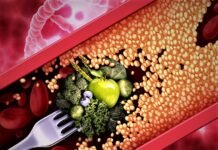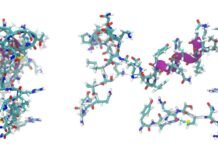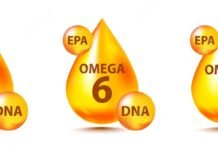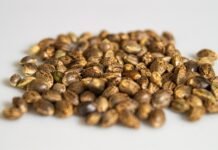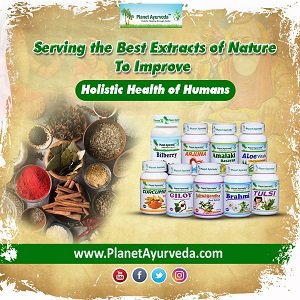Less than three years ago, even the most hardened advocate of marijuana would be surprised to hear that today children, seniors, and even pets are regularly given a product derived from cannabis plants — known as CBD oil.
CBD oil’s’ popularity continues to surprise many. In just 2018 alone, we’ve seen the first major research undertaken by veterinarians, the FDA has approved the first CBD medication, and the conservative Senate Majority Leader, Mitch McConnell, introduced the Hemp Farming Act of 2018. CBD is beneficial not only for humans but animals too. Theyucatantimes explains how it can help horses suffering from physical impairments.
Now attached to the 2018 U.S. Farm Bill — which is set to pass — this will remove all parts of hemp (a variety of cannabis plants) from the legal gray area it resides in. This will benefit farmers looking for loans, as well, it removes strong barriers on research and clinical trials.
While Hemp CBD oil has skyrocketed in popularity, it will hit the mainstream in 2019 as the few barriers holding it back are going the way of the Dodo. Within the next two to three years, we will see waves of clinical in-vivo research pouring in, and it will be fascinating to see if we discover anything new about the molecules that make up the oil and the plants themselves.
More importantly, however, we hope these studies confirm for us, without a shadow of a doubt, the true positives, and negatives of taking CBD oil from cannabis plants. Speaking of which, let’s look at the current pros and cons of hemp CBD oil.
CBD is not Marijuana
Pros:
Perhaps the biggest pro of CBD oil is that it’s usually derived from hemp plants which lack notable levels of the psychoactive phytocannabinoid, tetrahydrocannabinol (THC).
THC gives marijuana varieties of cannabis plants their high-inducing effects. THC is one of 113+ phytocannabinoids, but unlike it most are non-psychoactive. However, while non-psychoactive, these phytocannabinoids, such as cannabidiol (CBD), still help with a range of illnesses and biological functions.
This happens because all organisms with a backbone create their own endocannabinoids that attach to different receptors in the body. When these receptors are activated, they release an array of signals that balance, regulate and repair physiological and cognitive processes in the body on a cellular level.
Non-psychoactive phytocannabinoids will both increase natural endocannabinoid levels, as well, they can weakly attach to the same receptors providing additional relief from anxiety, inflammation, pain, nausea, etc.
Cons:
CBD oil derived from hemp isn’t marijuana.
Except for anxiety, inflammation, and a few lesser issues, marijuana’s medical properties are going to beat hemp’s every time. The reason THC produces a high is that it binds stronger to therapeutic CB1 receptors than self-produced cannabinoids do.
While you get high, there is a more significant degree of pain relief, reduced seizure rates, relief from nausea, increased appetite, etc. In vitro (taking place outside the body) studies show that potentially cannabis does cure cancer. We do not know if this happens in vivo (inside the body), but if it does, many believe it’s due to high levels of THC not CBD.
All in all, current research shows us that we will experience the most significant degree of therapeutic relief when all the cannabinoids and the terpenes — essential oils that produce the plant’s aromas — are in the oil. Even adding just a little THC in CBD oil can greatly improve the medical properties because of the phenomenon known as the entourage effect.
Cannabinoids and terpenes benefit each other in different ways, with some cannabinoids like CBC, promoting THC’s and CBD’s ability to pass through the blood-brain barrier — When isolated, both THC’s and CBD’s effects are one-sided and require higher than normal doses.
Unfortunately, THC needs to be removed from its schedule 1 status before we can study the full relationship and extent of the entourage effect. The line of thinking is there exists a perfect ratio between THC, CBD, and the rest of the phytocannabinoids — this ratio could only cause a slight and manageable high, or still none at all — high levels of CBD will counteract THC’s psychoactive properties.
Side Effects of CBD
Pros:
Comprehensive research as of late 2017, shows that CBD has a very low and safe side effect profile.
As well, the side effects contributed to CBD oil are much less severe than the side effects from many of the drugs CBD can replace or reduce the dosage of. Tiredness, nausea, and diarrhea are the most common side effects, and they are rarely seen.
Cons:
CBD oil has one potential big negative, and we are still unsure of the severity of it.
Like grapefruit, the phytocannabinoid version of CBD can inhibit Cytochrome P450 enzymes that metabolize the majority of pharmaceuticals in the liver. By doing this, it delays the pharmaceutical’s rate of metabolization and increases its potency.
This is a concern because when you raise the pharmaceutical’s potency, you often raise the severity of side effects. This has been reported as well.
The half pro/negative of this is that in the majority of these studies, they continued use of CBD — often lowering or raising the dosage — while simultaneously bringing down the dosage of the pharmaceutical. It takes trial and error, but most are successful. Often the end result is a success in lowering the dosage of the pharmaceutical, as well as, seeing an overall improvement of the condition.
Here are some helpful steps to follow before trying CBD:
- Are you currently on any pharmaceutical metabolized in the liver?
- If so, has your doctor warned you against eating grapefruit or mentioned CYP enzymes?
- If you answered “no” in step 2, you can try CBD oil but stay under 40 mg per dose. For most people, this is easy as CBD is weight dependent — around 15-30mg is the average. We have also a calculator where you can check and see how much CBD oil should you take and how well you can stay under 40mg.
- If you answered “yes” to step 2. Talk to your doctor as there are several ways you can avoid CBD interacting with your prescription medication. Even high doses of CBD often cause little to no issues due to body chemistry. By monitoring with regular blood tests, even if CBD inhibits too many CYP enzymes, side effects can be prevented by catching the interaction before any harm occurs.
Buying CBD
Pros:
Unlike marijuana, CBD oil is legal to purchase and use in all 50 U.S. states.
There is some confusion about CBD’s legality in Idaho and Nebraska because they have not passed their own laws governing the use of CBD oil with no THC — the other 48 states have. However, CBD oil derived from industrial hemp plants are legal in all 50 states if it’s derived under the guidelines set forth by the 2014 U.S. Farm Bill.
The DEA has contested this by saying all CBD oil is illegal and marijuana. After coming under fire, they backstepped and said that any cannabinoid derived from the flowers of the cannabis plant is marijuana and illegal under federal law. The mature stalks of cannabis plants are not covered under marijuana’s definition in The Control Substances Act. As long your CBD oil is derived from the stalks, your oil is legal.
Cons:
Your CBD oil probably isn’t legal.
Now, it’s legal to grow hemp that produces flowers under the 2014 Farm Bill, but you just can’t use them to derive CBD from it.
Taking CBD oil solely from the stalks is arduous, wasteful, and expensive — the stalks contain small traces of cannabinoids. It’s doable, but most companies don’t do it because it’s not profitable in the slightest, and the DEA is completely aware of this. However, they can’t do a thing about it as Congress has barred them from using any federal funds to go after medical marijuana — which includes hemp by default.
The only way for police or the DEA to confirm your CBD oil is illegal is if they went to where it’s manufactured and saw how it’s derived. You can’t test the oil and tell what part of the plant it came from — only for what it contains.
Deriving CBD from the stalks and/or flowers is what creates the legal grey area. This is why the Hemp Farming Act of 2018 is so important for farmers and researchers. They have to deal with the federal laws and the reality of where phytocannabinoids are derived from — those that only purchase CBD do not.
The language in the bill will define CBD and the other cannabinoids found in hemp as separate from THC and marijuana. Hemp flowers will no longer be considered marijuana flowers.
More Resources:





